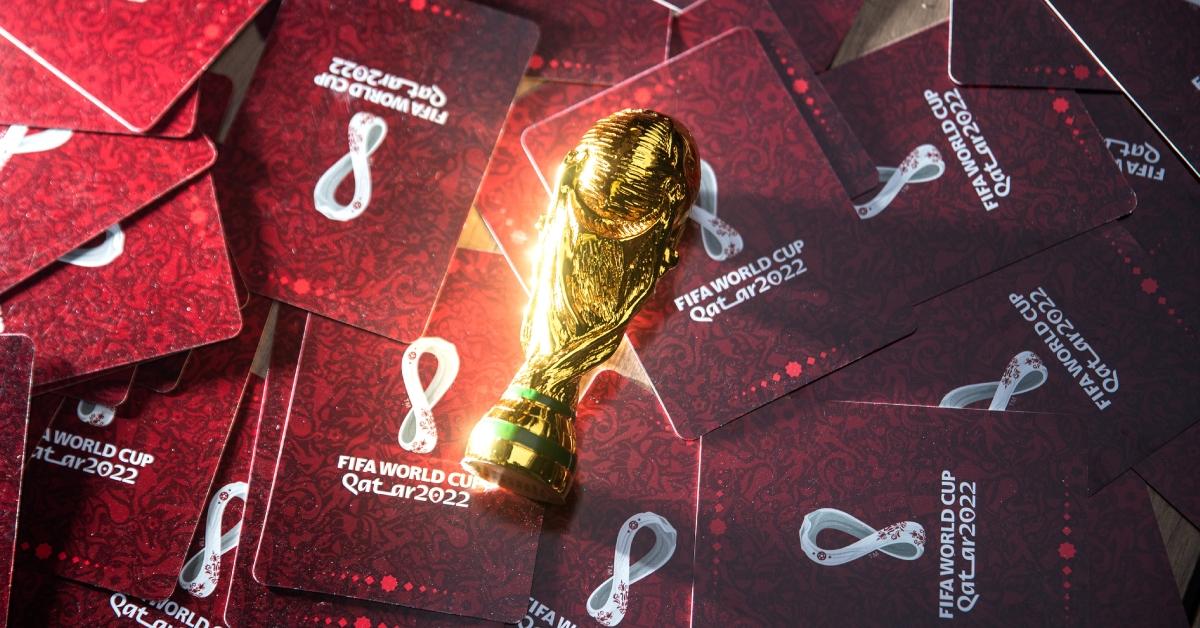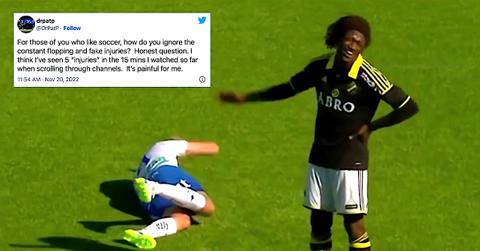World Cup Viewers Are Fed up With Soccer Players and Their Many Fake Injuries
Published Nov. 21 2022, 11:05 a.m. ET
At last, the 2022 FIFA World Cup is upon us!
For those unaware, the wildly popular global soccer (or football) tournament kicked off on Sunday, Nov. 20, and resulted in the controversial country Qatar becoming the first host nation to lose its opening game ... yikes.
OK, we're not here to rip Qatar a new one, so let's shift gears toward a different topic — fake injuries.
We've all seen a soccer player roll around in the grass and cry for help, only to stand up a few minutes later and continue as if nothing happened. Now, there are bound to be plenty of World Cup players who will bring the dramatics and exaggerations to the field, so we want to know: Why do soccer players fake injuries?

Why do soccer players fake injuries?
As much as we enjoy watching a soccer game, we are losing our love for the sport — why is that? Well, look no further than the players who constantly flop and feign injuries on the field.
According to Bleacher Report, faking injuries during a game is pure strategy; the tactic, commonly known as diving, refers to soccer players mimicking an injury to gain an unfair advantage by giving off the impression that a foul has occurred. All in all, the "injured" players hope to deceive the referees and either earn a free kick or invoke a penalty card against an opposing player.
So, is there a way we can detect if a player is faking an injury? Thankfully, there are many ways! A 2009 study from the Journal of Nonverbal Behavior found that a delayed reaction and a lack of contact consistency (i.e., the player clutches a body part that was not part of the impact) are the most recognizable traits of diving.
Additionally, psychologist Dr. Paul Morris discovered that the "archer's bow" position is the most prominent tell-tale sign of diving. The pose consists of a player raising both arms above the shoulder with open palms, a pushed-out chest, and both legs bent at the knee to lift their feet off the ground.
"This occurs in many dives, but biomechanically it does not occur in a natural fall," Dr. Morris said, per The Telegraph. "Instead, instinctively the arms either go down in an attempt to cushion the fall or out to the side for balance.
He added, "Moving the body like this is completely controlled [behavior] so it clearly doesn't show a genuine fall. The moment both arms go above the shoulder is a clear indication of deception."
World Cup viewers are not impressed by players who fake injuries.
Ahead of the 2022 World Cup opening game, many casual fans took to social media to discuss their frustrations with soccer players who constantly fake injuries. One person on Twitter asked, "For those of you who like soccer, how do you ignore the constant flopping and fake injuries?"
"I think I’ve seen five 'injuries' in the 15 minutes I watched so far when scrolling through channels. It’s painful for me," they added.
Another commented, "As a non-hard-core soccer fan, the World Cup is almost unwatchable with all the flops, people grabbing their legs, fake injuries, and 10 minutes later they are the fastest player on the field. [It's the] worst part of the sport along with the running clock." OK, preach!
